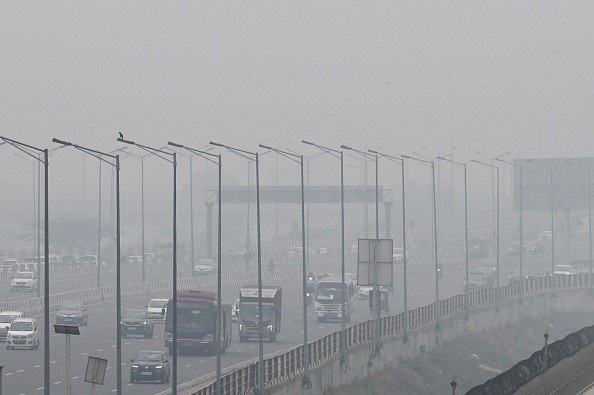A new model developed by the University of East Anglia (UEA) can now detect air contaminants that escaped during previous monitoring, thus providing a comprehensive picture for individuals and the development of policy. Air quality evaluations now depend on a significant degree of uncertainty, which might lead to faulty policy choices and bad health results.

New Method of Detecting Air Pollutants
The daily air quality index (DAQI), which is used to notify people about the amount of pollution present each day, is computed only on the basis of recorded pollutant concentrations, which may not accurately represent real pollution levels, according to Phys.org.
Researchers from the University of East Anglia's School of Computing Sciences and School of Environmental Sciences evaluated data from air pollution monitoring stations around the UK to develop statistical models for calculating missing pollutant amounts.
Dr. Wedad Alahamade, the lead researcher, said that in the current DAQI, certain important incidents may go unnoticed since some pollutants are not monitored at all stations.
If the pollution stations in a given region do not record all pollutants, they may overlook the presence of substantial levels of a single pollutant, resulting in inaccurate health warnings.
The proposed approach provides a more comprehensive picture of air quality and has allowed scientists to identify certain instances of air pollution that were detected in some stations but missed in others due to a lack of data collection in those stations.
The Complete Picture of Air Quality
With the new Model, scientists can make educated guesses about data values that haven't been measured, allowing them to recognize pollution incidents. It could also help to figure out where there is a need to take more measurements.
In the case of air pollution, the DAQI offers recommendations and health advice. At-risk persons, for example, may use it to determine whether they should engage in rigorous outdoor activities.
There are 285 air quality monitoring stations in the UK, which are part of several networks with varying goals and coverage.
Between 2015 and 2018, the UEA research gathered data from monitoring sites known as the Automatic Urban and Rural Network (AURN). This network's devices are fully automated and provide hourly pollution concentrations.
These details are gathered, saved, and made publicly accessible on the internet. This network's 169 stations are divided into four categories: rural, urban, suburban backdrop, roadside, and industrial.
Pollutants Used to Assess Air quality
Ozone (O3), nitrogen dioxide (NO2), particulate matter less than 2.5m in diameter (PM2.5) or less than 10m in diameter (PM10), and sulfur dioxide - SO2 - are the four major pollutants used to measure air quality in the United Kingdom.
Sulfur dioxide is not included in the research since it is one of the first four major pollutants (SO2). Because of the shutdown of coal facilities and limits on the sulfur content of fuels, the UK met the current sulfur dioxide emission ceiling from 2010 to 2019.
These pollutants are detected at monitoring stations, and the concentrations of each pollutant create a time series (TS) that must be transformed and analyzed before air quality evaluations can be produced.
The DAQI, which is derived using NO2, O3, PM2.5, and PM10 concentrations, is used to measure air quality. This index ranges from 1 to 10 and is split into four categories: 'low' (1-3),'moderate' (4-6), 'high' (7-9), and 'very high' (10). Initially, each pollutant is allocated an index value based on its observed concentration.
The fact that contaminants have various tendencies and seasonal variations complicates air pollution data processing. Furthermore, pollution may be released from a variety of sources and be engaged in a variety of chemical processes, resulting in a wide range of temporal and geographical distributions in its concentrations.
For more news, updates about air pollution and similar topics don't forget to follow Nature World News!
© 2025 NatureWorldNews.com All rights reserved. Do not reproduce without permission.





